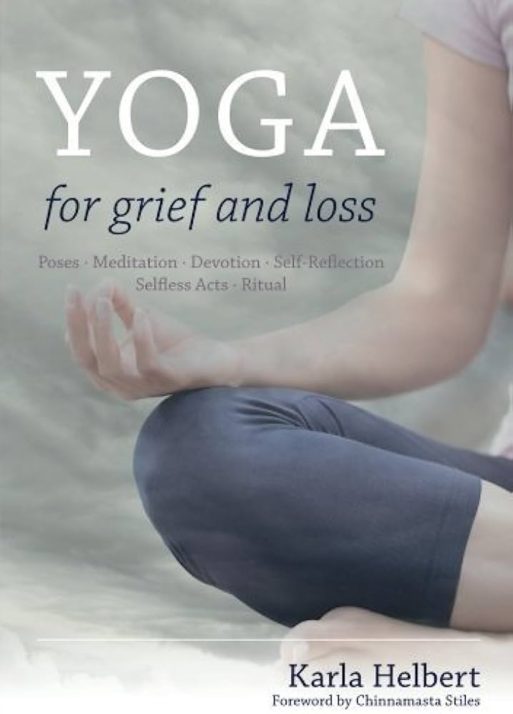 I was quite curious about “Yoga for Grief and Loss” by Karla Helbert. Before picking it up I had never read or even seen a book of its kind. What I found in its pages was a compassionate, profound, and practical resource to support all humans in their path of grief — it’s appropriate for those who have never tried yoga as well as experienced yogis with a dedicated practice.
I was quite curious about “Yoga for Grief and Loss” by Karla Helbert. Before picking it up I had never read or even seen a book of its kind. What I found in its pages was a compassionate, profound, and practical resource to support all humans in their path of grief — it’s appropriate for those who have never tried yoga as well as experienced yogis with a dedicated practice.
The healing practice of yoga and its supportive branches have a long and rich history, but Helbert makes the complex system accessible and digestible. She is well-poised to do so: Helbert herself is a licensed professional counselor and certified yoga therapist. That being said, she brings more than her knowledge and expertise — she brings a connected and understanding voice, sharing her own journey with grief as a bereaved mother.
Why Yoga for Grief
In every aspect of the book, Helbert is compassionate and practical. She never indicates that yoga or meditation will “fix” anyone or “hurry” them to healing, nor does she imply that a person in grief needs to be fixed. Far from it. Instead, she affirms that we are whole, even in the pain, even in grief, and even if we feel completely broken.
In chapter one, Helbert explain how yoga can help us learn to be in our grief and live a connected life at the same time. She states:
Yoga teaches us to accept who we are, where we are, how we are right now. [It] helps us see ourselves, our world, the universe, our beloved dead differently, in ways that can lead to peace, even within pain…Yoga teaches that we are whole and perfect just as we are, even if we do not believe it for ourselves.
The Many Forms of Yoga
Following chapter one, the rest of the book is structured so each chapter looks at one of six branches of yoga – Jnana, Bhakti, Tantra, Karma, Raja and Hatha are all included. Each chapter explores how different practices can support us through the many faces of grief, whether it be through self-reflection, devotion, meditation, or physical postures.
There is no right way or wrong way to interact with the book. There are suggestions and practices offered with each chapter, but what you choose to read and practice is up to you. Helbert encourages readers to choose what they feel drawn to, and to combine the varying methods to cultivate their own personal practice. As she points out, there is something for every time and place on the path of grief.

I found “Yoga for Grief and Loss” to be a deeply touching and comprehensive resource. Helbert reveals a new way to be in grief and find healing — one that, as author and counselor Megan Divine comments, “companions pain, rather than trying to solve it.”
I also appreciate Helbert’s selection of demonstrative photos: It’s not the typical display of yogi experts in yoga gear. It’s real people in normal clothes, which serves to affirm that we don’t have to be anything to experience the wholeness that yoga can bring. We come as we are, and we are accepted as we are.
Helbert’s personal story, thorough exploration, and compassionate voice make this book a true treasure — one that I will visit again and again.

 “Yoga For Grief and Loss” by Karla Helbert
“Yoga For Grief and Loss” by Karla Helbert


 First the Wealth Gap, Now the U.S. Has a Growing Health Gap
First the Wealth Gap, Now the U.S. Has a Growing Health Gap
 How to Comfort A Dying Loved One
How to Comfort A Dying Loved One
 Our Annual Seven Holiday Gifts for Someone Who Is Grieving, 2024 Edition
Our Annual Seven Holiday Gifts for Someone Who Is Grieving, 2024 Edition














